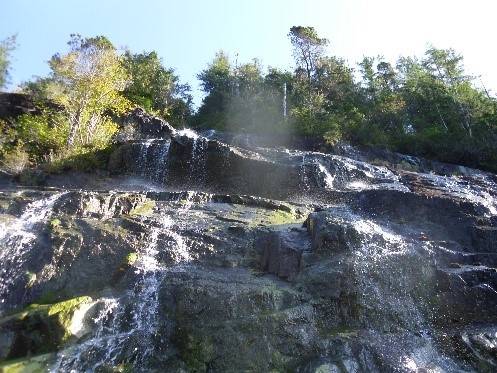
Environmental Science Undergraduate Theses
Date of Award
Summer 8-21-2020
Document Type
Undergraduate Thesis
Department
Environmental Science
First Advisor
Julie Masura
Second Advisor
Cheryl Greengrove
Abstract
Clayoquot Sound of British Columbia, Canada is a protected biosphere that has been affected by Alexandrium, a known toxic dinoflagellate, that when consumed by humans can cause paralytic shellfish poisoning. The “BLOB” events that heated the water in the Pacific Ocean in 2014 and 2019 created favorable conditions for these algae to flourish in this region. This study focused on analyzing and comparing nitrate, phosphate, and silicate levels, oceanic conditions, and water properties like temperature, salinity, density, dissolved oxygen, fluorescence, and transmissivity for Herbert Inlet in 2014 and 2019. Surface and bottom samples were collected and sent to the University of Washington School of Oceanography Marine Chemistry Lab for analysis. Meteorological data was collected from Tofino airport, and the tidal data was observed at Riley Cove. A CTD (Conductivity, Temperature, Depth) instrument was used to record the water properties as it was lowered into the water. For the nutrient data, Microsoft Excel was used to create five number summaries, and box and whisker charts. ArcGIS was used to create station maps and choropleth maps that showed the relative abundance of nutrients at each station. Data from the CTD was plotted and showed significant differences from the previous years. The results showed the nutrient levels in 2019 were lower than 2014, but the temperature in 2019 had increased by 2°C throughout the Inlet, and these warmer waters were starting to make their way into the deeper waters throughout Herbert Inlet.
Recommended Citation
Byers, Claire, "Clayoquot Sound Harmful Algal Blooms Investigation of Herbert Inlet – 2019" (2020). Environmental Science Undergraduate Theses. 2.
https://digitalcommons.tacoma.uw.edu/envsci_theses/2
